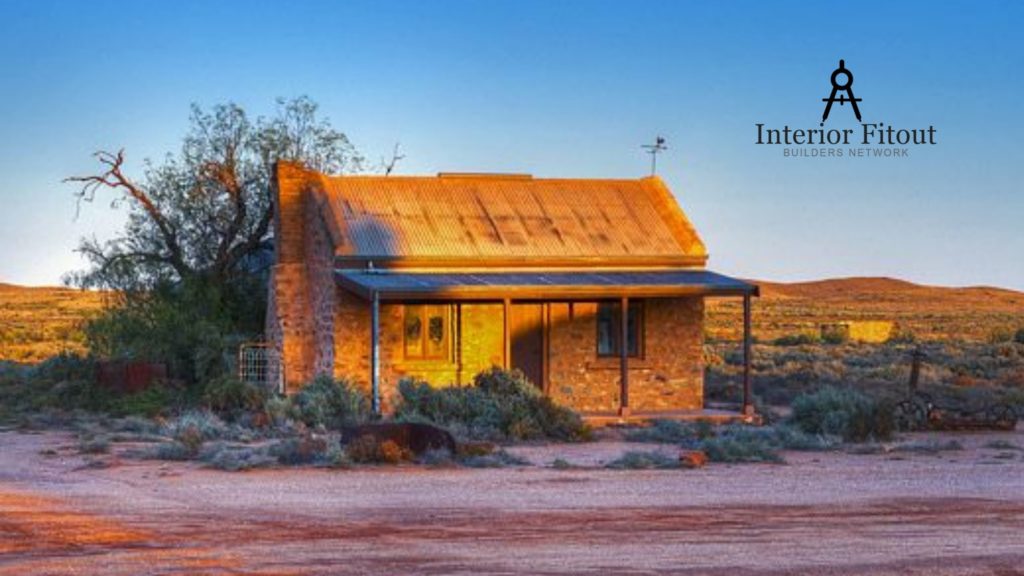
Australia is famous for its hot climate, with much of this massive country reaching some pretty uncomfortable temperatures. The sheer scale of Australia means that different parts of the country are affected by a range of different weather systems. With so few major cities in comparison to their size, most of the hottest places in Australia are fairly isolated small towns found in the outback or other rural parts of the country. Australia usually has an arid desert climate or a tropical climate with wet and dry seasons and large parts of the country are incredibly hot all year round. Yet glorious sunshine and high temperatures are felt all across Australia to varying degrees, particularly in the summer, which runs from December to February. As many parts of Australia get incredibly hot, and recent trends suggest that they’re only going to get hotter.
Striking contemporary architecture is not the first thing that springs to mind when contemplating a dry and dusty regional interior design for hot Australian outback locations. Yet a series of tourist attractions in outback Australia has become an unlikely architectural trail that’s making a difference to the economic prosperity of the remote locations.
Eco-conscious Design Western Australia Outback
Composed of 230m of simple, natural materials, this earthen structure may look unassuming, yet it is actually the longest rammed earth wall in Australia. Built to accommodate cattle workers during mustering season in the scorching Western Australia outback, the eco-friendly formation represents a shift in the approach to the architectural design of this sort. Built by Luigi Rosselli Architects and tucked into the edge of a sand dune, this “Great Wall of Australia” is a brilliant example of a simple, eco-conscious design.
The wall is constructed primarily using iron-rich, sandy clay obtained from the building site and gravel from a nearby river, which are bound together using water from a local bore (hole). This ancient technique forms the exterior faade, which is then built into a sand dune that forms the rear and roof of the building. Unique accommodation on a tour of Cape York is adapted to tremendous heat simple in theory, this results in a structure that naturally stays cool, even in the intense heat of the outback. The continuous building contains twelve earth-covered apartments, separated by angled verandas to maintain privacy. Designer Sarah Foletta creates an interior space with a minimalistic yet liveable style, and a central hub on top of the wall provides a place for residents to meet and socialize.
It may seem decidedly elementary, yet this natural, energy-efficient approach towards housing development will save time, money, and resources. The design has been acknowledged by the Australian Institute of Architects, and hopefully represents a shift towards similarly eco-friendly architecture in the future.
Australian Outback Architectural Styles
We’re fortunate in Australia to have a great mix of architectural styles and luxury bathrooms can be renovated to moderate heat and cold. The different types of regional interior design for hot Australian outback locations.
Whilst this concludes the Barcaldine / Longreach / Winton architecture trail, there is one other regional treasure for the intrepid design tourist. A side trip to Muttaburra officially Queensland’s geographic centre reveals Brian Hooper’s Muttaburrasaurus Interpretation Centre, a sculptural insertion into the landscape that tells the story of a dinosaur fossil found near Muttaburra in 1963.
For Queensland’s Central West, investment in quality design has delivered on the adage that the whole is greater than the sum of its parts. With strategically planned and beautifully executed design across four connected towns, the reward for visitors and locals alike is exponential. Tourists on the long journey west are treated to a series of rich, engaging experiences that amplify history and culture and leave a lasting impression Matt Bron says 50% of visitors to the Outback return a second time. For the townships, increased amenity attracts not just more people but also new events that support local employment and businesses and create opportunities for further investment.
Michael cites the Barcaldine example. “Before the master plan strategies and the Tree of Knowledge project is completed, no pubs hired external cooks or chefs for meals. No pub had an international backpacker as a bartender, and none of the businesses in town had done work on their commercial facades for some years. These changes are now all evident.”
Providing even the smallest of communities with the highest quality design bestows respect on people and their stories, and on the places, they call home. Preserving and enhancing local identity, culture and pride is perhaps the most valuable design outcome of all.
